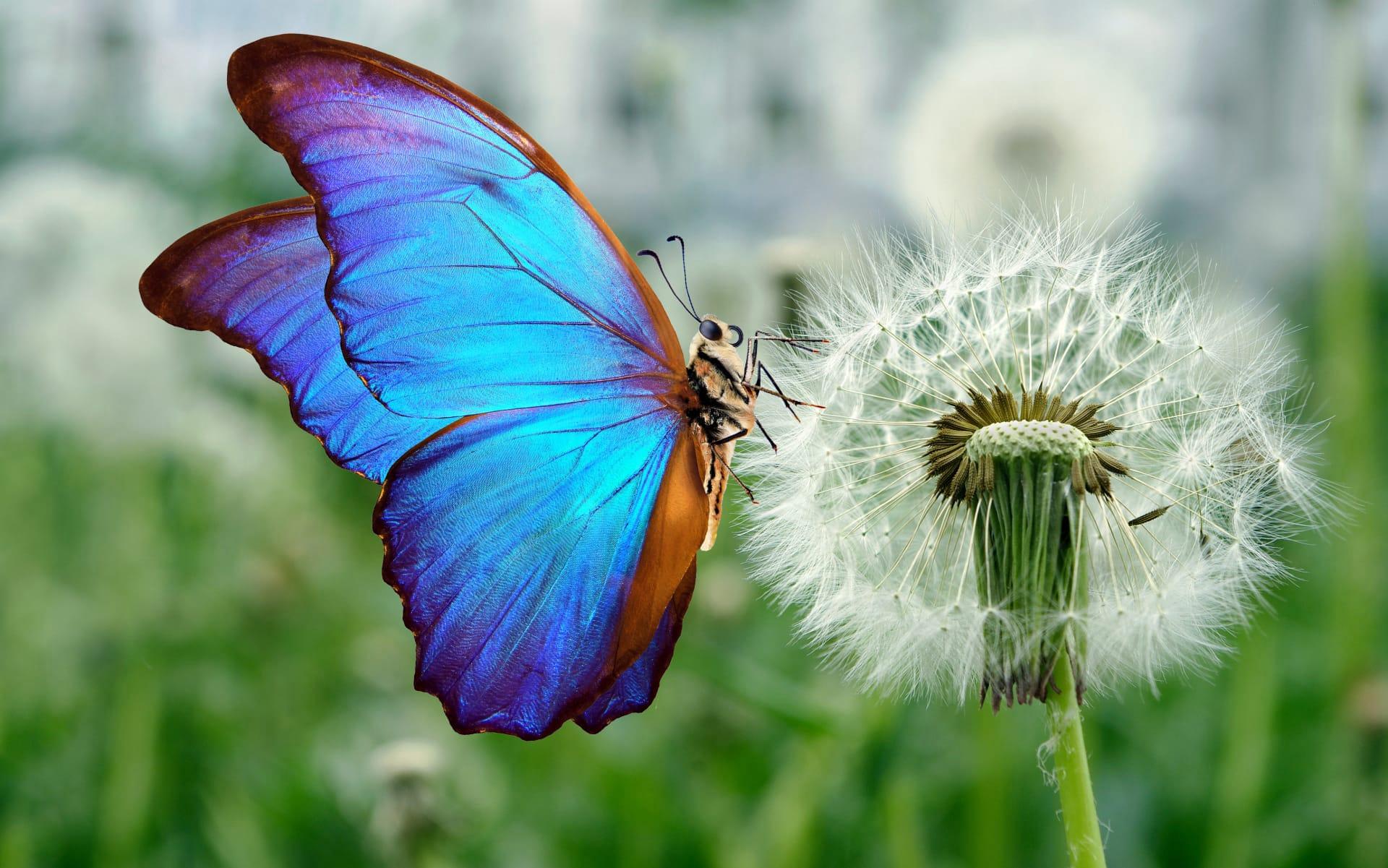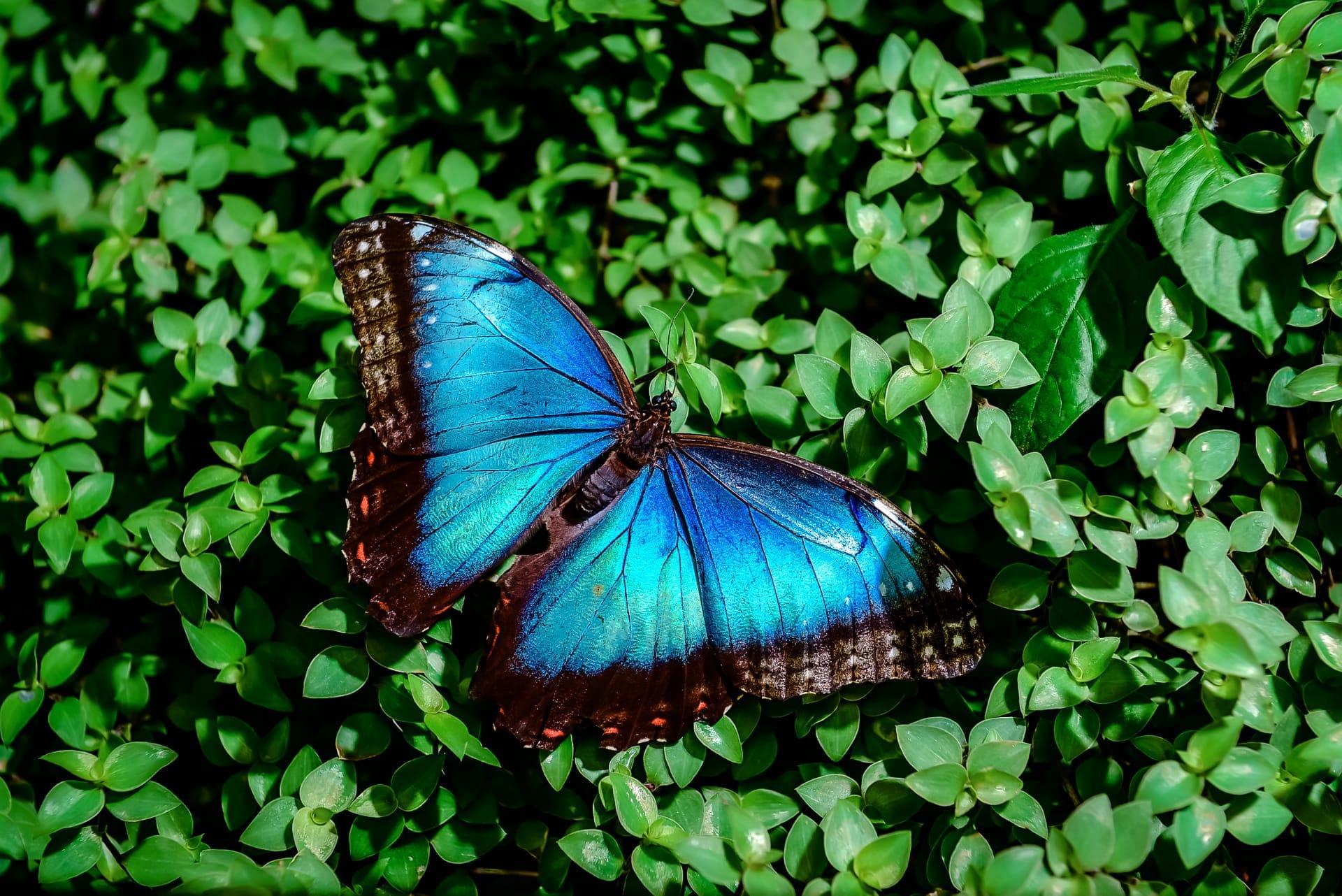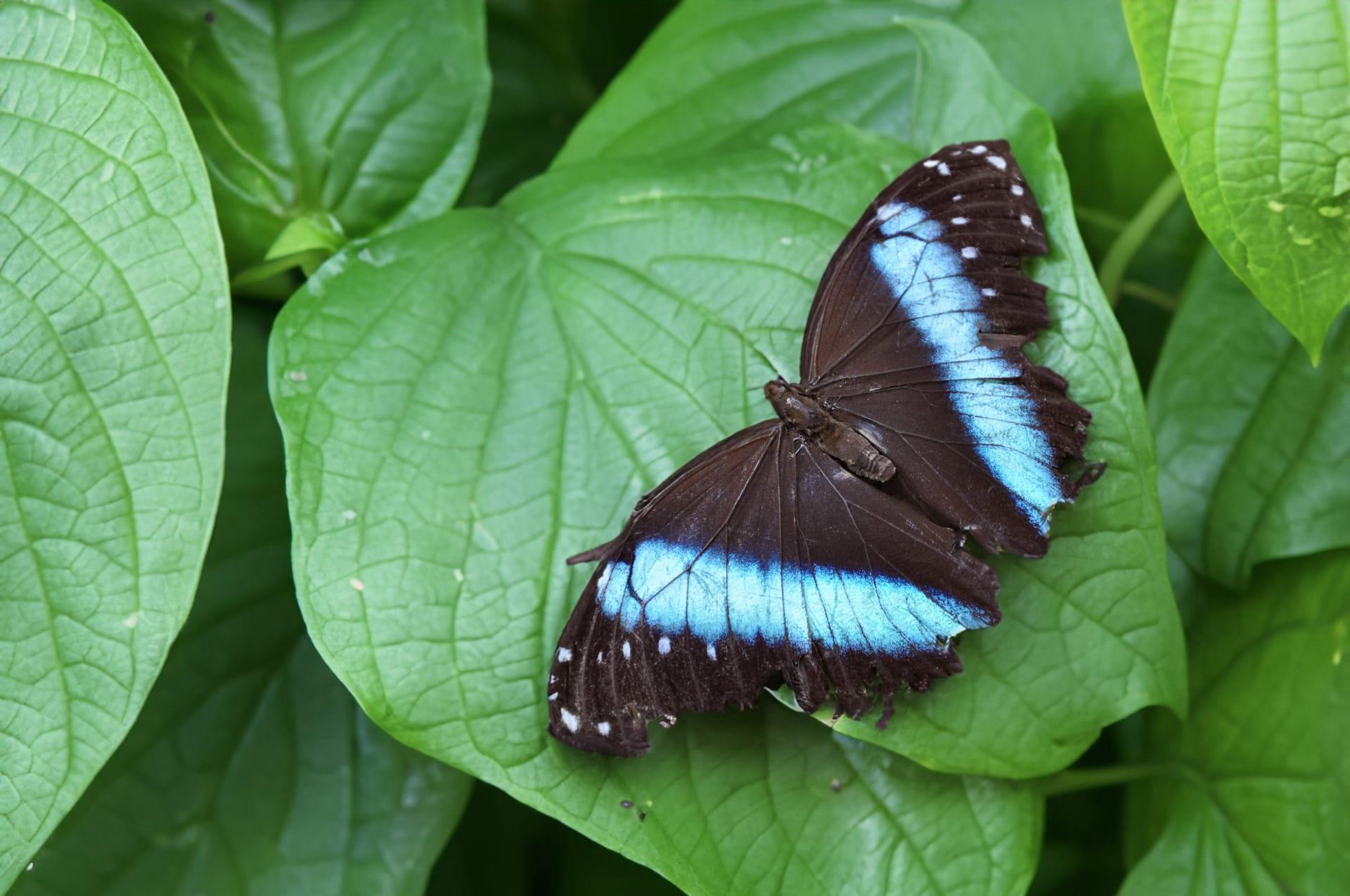Morpho Butterfly Characteristics
- Home /
- Mini Encyclopedia /
- Animal /
- Morpho Butterfly Characteristics
1
Morpho butterflies, a group of over 29 accepted species, are famed for their vibrant blue wings. These butterflies, predominantly found in Central and South America, display a wingspan ranging from 7.5 to 20 centimeters, making them one of the larger species in the butterfly family. Their lifespan is rather short; adults typically live only about 115 days. Morphos, in their caterpillar stage, can span from 1 to 1.5 inches in length, with a varied diet depending on the species.
The most remarkable feature of Morpho butterflies is their wings. The vivid blue color is not due to pigmentation but is an example of iridescence through structural coloration. Microscopic scales on their wings reflect light in such a way that they appear a brilliant blue. This coloration serves multiple purposes: it's used for attracting mates and also as a defense mechanism. When in flight, the bright blue wings can appear and disappear, creating a flashing effect that confuses potential predators.

2
Question: Why do Morpho butterflies appear blue if they don't have blue pigmentation?
Answer: The blue color of Morpho butterflies is a result of light interference on the microscopic scales covering their wings. These scales are composed of many layers of proteins that reflect light at varying wavelengths. The physical structure of these scales causes light to be refracted and reflected in a way that predominantly blue light is seen by the human eye. This phenomenon, known as structural coloration, is different from most other butterflies, which use pigments to color their wings. The Morpho's unique structure allows it to display this vivid blue without any actual blue pigment.

3
Morpho butterflies are noted for their impressive flight capabilities. They can fly at speeds up to 12 kilometers per hour, with a flight style that is typically described as flapping and gliding. Their large wings allow them to make long, slow glides, and their flapping is more powerful and deliberate compared to smaller butterfly species. This flight pattern, combined with their bright wings, makes them very noticeable in their natural habitats.
As for feeding, Morpho butterflies primarily consume the juices of decomposing fruits and tree sap. They can also be found sipping on the fluids of rotting animals, wet mud, and even fungi. Unlike many other butterfly species, Morphos are not typically seen feeding on flowers. Instead, their proboscis, a long, tube-like tongue, is well adapted to sucking up the juices they prefer.

4
Morpho butterflies thrive in the tropical forests of Latin America, from Mexico to Central and South America. They favor the understory of the forest, often staying near the ground or in the lower layers of the trees. These environments provide the necessary humidity and temperature for their survival, along with adequate food sources.
In terms of reproduction, Morpho butterflies lay their eggs on the undersides of leaves, particularly favoring plants like legumes. After the eggs hatch, the caterpillars are solitary feeders, often consuming a wide variety of host plants. The caterpillars are known for their striking colors and patterns, which serve as a warning to potential predators about their toxicity. The transformation from caterpillar to adult butterfly occurs within a chrysalis, where they undergo metamorphosis over a period of about 20 days.

5
Book: "The Enchanting World of Morpho Butterflies" by Dr. Linda E. Rainforest, published in the United States in 1998. This comprehensive guide delves into the biology, behavior, and habitat of Morpho butterflies. Dr. Rainforest, an entomologist, provides detailed insights into their life cycle, structural coloration, and their role in the ecosystem. The book also features stunning photographs, capturing the beauty of these butterflies in their natural habitats.
Book: "Morpho: The Blue Mystery" by Alexander B. Wing, published in the UK in 2005. This book explores the cultural and scientific significance of Morpho butterflies, particularly focusing on their iridescent blue wings. Wing, a biologist and photographer, combines scientific explanations with anecdotal experiences, recounting his travels through the rainforests of South America in search of these elusive creatures. The book is rich with personal narratives and vivid imagery, making it an engaging read for both scientists and general readers alike.